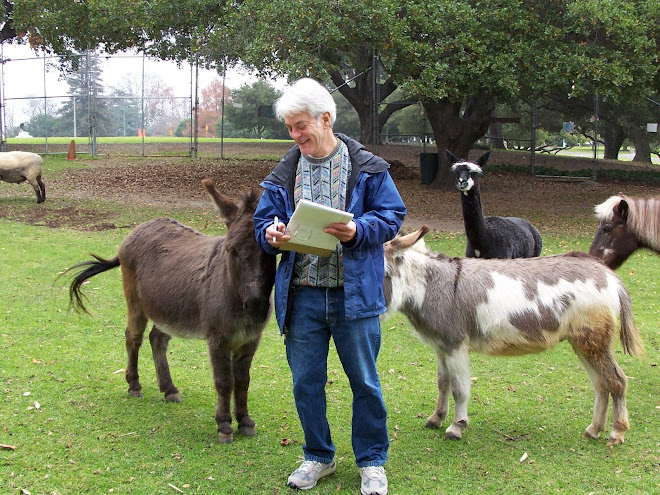Did you know that during the 1906
San Francisco earthquake– whose 106th anniversary we'll observe on
Monday - a five-foot-high tsunami
wiped out the lumber wharves in west Berkeley?
Only one person – a man named B.J.
Rose – was on the wharf at the time. The wave knocked him into the water, along
with half a million feet of lumber. But somehow he miraculously survived.
Never heard of it? Neither did
anyone else, including the U.S. Geological Survey. The tsunami was a one-inch
story in the next day's Berkeley Gazette; but with everything that was
happening, it was quickly forgotten.
But in 2005 a local historian named
Richard Schwartz rediscovered the story and notified the USGS. They ran the
numbers and decided the tsunami probably was caused by part of Yerba Buena Island falling
into the Bay.
"Now here's the scary
part," says Schwartz. "The Hayward Fault would cause a much bigger
tsunami. Which means all of the flatlands are at risk, not just west
Berkeley."
This is just one of the hundreds of
great stories in Schwartz's book, "Earthquake Exodus, 1906: Berkeley
Responds to the San Francisco Refugees." You can't turn a page without stumbling over another
fascinating factoid. For instance:
The ROTC cadets at Cal were
mustered into service and ferried to San Francisco to prevent looting.
"At first, they treated it
like a joke," says Schwartz. "But all the laughing stopped when boxes
of live ammunition were brought out on deck, and they realized they might be
forced to shoot their fellow citizens."
Many French Americans from San
Francisco found refuge in Berkeley's booming French Quarter on Fourth Street,
which featured some of the finest French restaurants in the Bay Area.
"But the next year, the city
passed an ordinance banning the consumption of alcohol, and that put an end to
Berkeley's French Quarter," Schwartz says. "The restaurant owners
closed their establishments rather than compromise their culture."
And, of course, there's the Italian
American fishing boat captain who was ferrying frightened refugees from North
Beach to Berkeley.
"As they were crossing the Bay
he noticed a young woman who looked really scared. He put his hand on her
shoulder and said, 'It's going to be OK.' They fell in love, got married, and
had a son. That son's name was Joseph L. Alioto, the future mayor of San
Francisco."
Schwartz himself is as interesting
as the stories he tells. He's not a professional historian; he's a building
contractor.
One day in 1996 he happened to be
visiting the Berkeley Historical Society when he spotted a two-foot stack of
old Berkeley Gazettes from 1900 to 1909 that they were about to throw out.
"Hey, I'll take them," he
said. The newspapers became the basis of his first book, "Berkeley 1900:
Daily Life at the Turn of the Century," published in 2000. That was
followed by "Earthquake Exodus" in 2005 and "Eccentrics, Heroes
and Cuttthroats of Old Berkeley" in 2007.
Not being an academic historian, he
didn't know that you're supposed to leave out all the interesting stuff and put
in only the boring parts. So he did the opposite.
All three books are available not
only at local bookstores, but at local hardware stores, too - he's a building
contractor, remember? – as well as at http://www.RichardSchwartz.info/















No comments:
Post a Comment